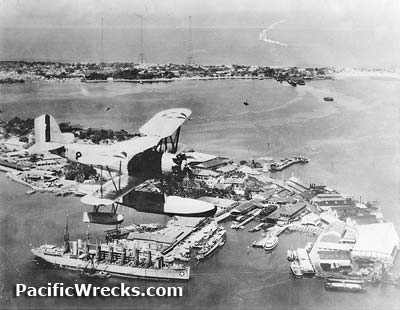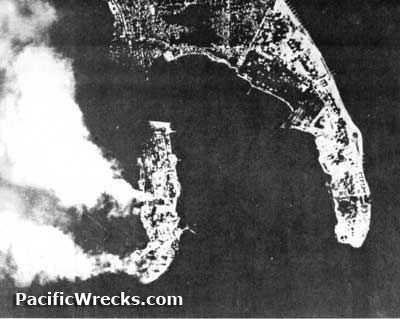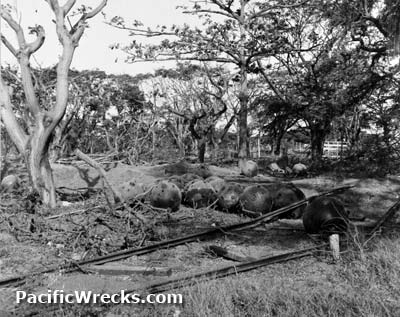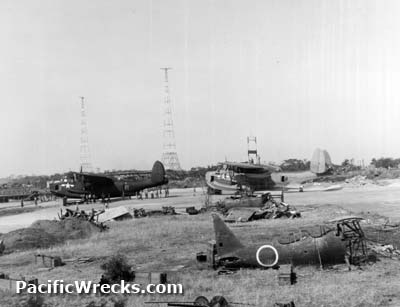|
|
|
|
| Missing In Action (MIA) | Prisoners Of War (POW) | Unexploded Ordnance (UXO) |
| Chronology | Locations | Aircraft | Ships | Submit Info | How You Can Help | Donate |
|
 USN c1938  IJN December 10, 1941  IJN December 17, 1941  USN March 13, 1945  USN March 13, 1945  Justin Taylan 2005 |
Location Lat 14° 28' 60N Long 120° 55' 0E Cavite is located on the Cavite Peninsula in Cavite Province on Luzon in the Calabarzon Region (Region IV-A) in the Philippines. Borders Manila Bay to the north. Today known as Cavite City. Cavite Naval Base (Sangley Point, Canacao Point, Cavite) Known as Sangley Naval Base, Cavite, Cavite Naval Base or Cavite Naval Yard. Canacao Point is the name of the are and was part of the Cavite Naval Reservoir. The name "Sangley" was a local or colloquial term coined by Filipinos to Chinese merchants (xiang-li) who used the area since the earliest history. Construction After the Spanish-American war, the U.S. Navy (USN) developed the Cavite area into a Navy yard, airfield, seaplane base, hospital and support facilities. This station was headquarters of the U.S. Navy Asiatic Fleet. Wartime History On December 10, 1941 at 12:30pm Japanese planes attacked Cavite and cause heavy damage by bombing the central wharf and hit a torpedo warehouse causing torpedoes to explode and burn and damage USS Peary DD-226 and heavily damage is USS Sealion SS-195 later scuttled on December 25, 1941. Afterward, PT Boats from Motor Torpedo Boat Squadron 3 (MTBRon3) help transport injured personnel to the hospital at Cañacao then move to Sisiman Bay on the Bataan Peninsula. On December 26, 1941 the remaining U.S. Navy (USN) Naval Defense forces and U.S. Marine Corps (USMC) battalion at Cavite move to Corregidor. On January 2, 1942 Cavite was occupied by the Japanese. The US Navy bases at Cavite and Sangley were immediately repaired and expanded for use by the Japanese Navy to repair vessels and construct small wooden ships for coastal shipping. By late January, the Kondo Detachment setup four 105mm and two 150mm guns. Later, they brought ten 240mm Howitzers, of the Hayakawa Detachment, commanded by Col. Masayoshi Hayakawa, that began operating in March, deployed in the Ternate area. They began to lay heavy bombardment fire on the Harbor defenses of Manila Bay. In mid-February another two 150mm guns were added to this force. Shelling continued until March 20th when the Hayakawa Detachment was disbanded on March and its guns transferred to Bataan. During the Japanese occupation of the Philippines, Cavite was occupied and used by the Imperial Japanese Navy (IJN) as an anchorage, naval base and seaplane operating area. Starting in September 1944 attacked by U.S. Navy (USN) carrier aircraft and again badly damaged including the hospital buildings at Cañacao. During early 1945 bombed by U.S. Army Air Force (USAAF) medium and heavy bombers. The Japanese defenders left demolition charges in the installation but they were never detonated. American missions against Cavite January 24, 1945–March 28, 1945 During late March 1945, the Cavite area was liberated by U.S. forces. Within a month, U.S. Navy (USN) ACORN-45 arrived and set up an advance base and began construction of an airfield for use in the later operations. During 1945, the Cavite Navy Base maintenance organization was designated Naval Air Base, Sangley Point and remained in use until the end of the Pacific War. Postwar In early in 1955 Sangley Point was designated as a permanent facility. After NAS Cubi Point was established at Subic Bay, the based designation was changed to Naval Station Sangley Point. The base also included a Naval Communications Center, Marine Barracks, and other facilities and was used extensively during the Vietnam War. On September 1, 1971, the base was officially turned over to the government of the Philippines. It is currently used as a facility of the Philippine Navy and the Philippine Air Force. The Cavite Navy Yard & Sub Support Facility The Cavite Navy Yard, just across Cañacao Bay, became the major ship repair facility for the Asiatic fleet prior to the Pacific War. Submarine support facilities were also established at the naval yard. Cañacao Naval Hospital At this location, the Spanish built a hospital. After the American occupation of the Philippines, the US Navy hospital was renamed the Cañacao Naval Hospital Reservation. In the mid-1920's a modern new hospital was built as part of a major construction project to modernize the facility. This hospital served the Navy until early 1942 when it was destroyed during World War II. Radio Sangley Three 600' steel antenna towers were erected in 1915 for the operation of a powerful radio communications station: 'Radio Sangley'. These towers survived the Japanese bombardment in 1941-42, and American liberation in 1945. NAS Sangley Point (Antonio Bautista Airbase) Located at Sangley Point built by the U.S. Navy prewar and still in use today Cañacao Seaplane Base (NAS Canacao, Kanakao, Cavite) Located at Sangley Point prewar used by Japanese and liberated USS Sealion SS-195 Damaged December 8, 1941 and scuttled December 25, 1941 wreckage salvaged 1961 Contribute
Information Last Updated
|
Map Fallingrain Map Mapcarta Photo Archive |
| Discussion Forum | Daily Updates | Reviews | Museums | Interviews & Oral Histories |
|